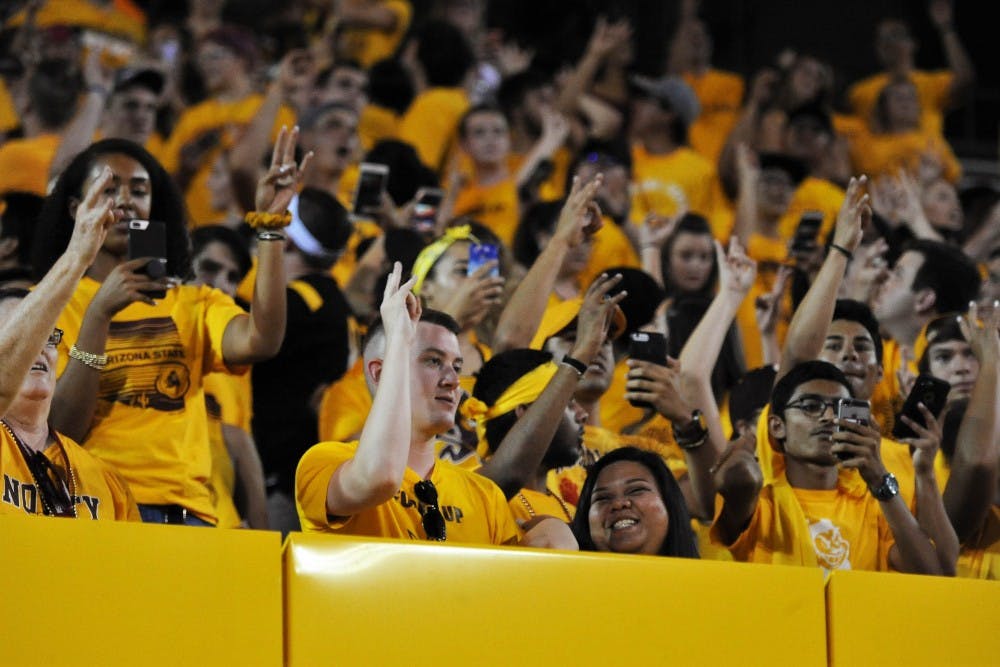In the 1960s and ‘70s, jai alai was one of America’s most electrifying sports — a fast-paced, dangerous game, similar to handball, that drew raucous crowds in the heart of brimming metropolises like Miami.
By the end of the 1980s, due partly to a players strike, gambling’s divorce from sports and the rise in popularity of sports like baseball and football, the hype surrounding jai alai was nearly extinct.
Today, a majority of people have likely never heard of the once-famed sport. Jai alai serves a stark reminder of the fleeting nature of sports and all that comes along with them: its fans, leagues and players.
Yet, in the constantly changing world of sports fanaticism, many leagues and sports today are facing a new and more prolonged challenge: their fans are getting older.
For college sports, especially the cash cows like basketball and football, this is a big problem. Older fans means that sports are losing their viewers faster than they can replenish them.
Since 2000, college football’s median television audience age has risen six years and basketball’s has risen eight. Both sports now have a median viewing age of 52 years old.
The real issue these numbers illustrate is that while major college sports viewers are getting older, there are more students enrolled at public colleges than ever before. In fact, from 2000 to 2015, public university enrollment rose nearly 26 percent.
There are more young college students than ever before, yet viewers are getting older. That should set off major alarms for sports marketers.
Yet, it seems as if the opposite is happening – universities don't seem to mind this change in viewership.
NCAA college sports revenue growth has skyrocketed by almost 150 percent over the past decade, and universities are investing in their cash-cow sports at breakneck speed. Multimillion-dollar stadiums are cropping up across the country at an astounding rate, and there are practice facilities like Clemson’s newest installment, which boasts amenities like a barber shop, Wiffle ball field and a bunk room.
It seems as if college sports are more popular than ever before, so why change the business model?
The difficulty with answering that question lies in finding a solution that mixes both short-term revenue growth and long-term sustainability as a sport for public consumption.
Forward-looking schools will make an effort to appeal to younger viewers while reinforcing the parts of the sport that make it so popular. Millennials are increasingly consuming sports and entertainment using streaming services, rather than conventional cable television.
“I would say that these sports need to work to better connect with the viewing habits of the younger generation,” Daniel McIntosh, a W.P. Carey lecturer who teaches sports business at ASU, said.
That trend has emerged strongly in March Madness. This year, there were roughly 70 million streams of college basketball’s championship tournament, compared to only 11.9 million television viewers. Live stream numbers are up 24 percent over last year.
A number of leagues across the U.S. have been forced to deal with aging fan bases and declining television audiences as well, including NASCAR, golf and hockey – albeit to a more extreme extent than college sports.
“I would not say their demise is inevitable, but that a strategic re-think is needed for how they plan to reach younger audiences more effectively in this changing media landscape,” McIntosh said.
The conundrum of the aging sports fan is a problem weaved into sport culture in the U.S., and it calls into question the future of all varieties of leagues.
Aging fan bases could prove to be fatal for sports, but if leagues can position themselves for a younger audience that demands streaming services over bloated cable packages, they have a chance to overcome the challenges of aging.
According to Sports Market Analytics, ASU rakes in roughly 49 million dollars annually from its football and basketball programs combined, and 92 million dollars from all its college athletics combined.
For as steady as those revenue streams have been, assessing the long-term profitability from these programs is absolutely essential, not only for sports, but for the schools that run them.
Reach the columnist at jmsloan3@asu.edu or follow @jakeuzzi on Twitter.
Like The State Press on Facebook and follow @statepress on Twitter.
Editor’s note: The opinions presented in this column are the author’s and do not imply any endorsement from The State Press or its editors.
Want to join the conversation? Send an email to opiniondesk.statepress@gmail.com. Keep letters under 500 words and be sure to include your university affiliation. Anonymity will not be granted.




